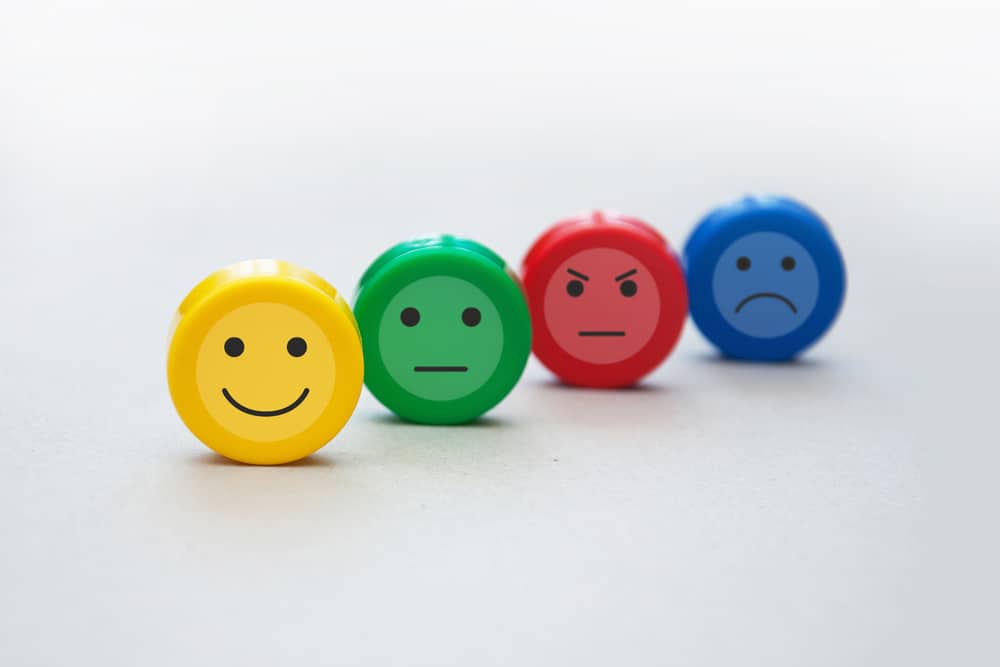The Fascinating Link Between Colours and Our Emotions
Colours not only beautify our world but also influence our emotions. But why do specific colours stir specific feelings?
Deepening the Psychological Impact of Colours
Studies deepen our understanding of how colours affect us. Red, for example, is not just stimulating but can also enhance perceptions of dominance. This might be because red hues mimic the appearance of oxygenated blood, a sign of vitality and aggression across species. This association might influence human behaviour in competitive environments, such as sports, where wearing red could offer a psychological edge.
Conversely, blue’s calming effect could be linked to its prevalence in nature, like the expansive sky or sea, which historically signal safety and openness.
Alongside red and blue, other colours also evoke distinct emotional responses based on both cultural contexts and inherent properties. Green, often seen in nature, is associated with health, which might explain its calming effect and use in hospitals to promote healing.
Orange combines the energy of red and the happiness of yellow, often perceived as friendly and inviting, making it a popular choice in social spaces.
Detailed Analysis of Empirical Research on Colour and Emotion
Empirical studies provide a nuanced understanding of how specific wavelengths and hues influence human behaviour and psychological states. For instance, research has documented that exposure to red increases physical reactions, elevating heart rate, which is linked to heightened alertness and aggression. This physiological response may confer a competitive advantage in sports or confrontational scenarios.
Blue light has demonstrated an ability to enhance performance in creative problem-solving tasks during cognitive evaluations. This effect is attributed to the shorter wavelengths of blue, which foster mental tranquility and encourage a broader cognitive style.
On the other hand, studies on yellow have highlighted its dual impact: while it raises attention due to its brightness, excessive exposure can lead to visual fatigue.
Comparing Emotional Associations with Colours
Recent research involving 132 university students explored whether emotional associations with colours vary when presented as terms or patches. The study required participants to link 20 emotion concepts to 12 colours under two conditions: as colour terms and as colour patches.
Notably, participants associated black with more negative emotions and higher intensity as a term than as a patch. Additionally, the research revealed minimal differences in emotional associations across the dimensions of valence, arousal, and power. This indicates that emotions relate more to the concept of colours rather than to the specific perceptual or linguistic properties of colour. Essentially, colour-emotion associations remain abstract and accessible through both perceptual (patches) and linguistic (terms) presentations, at least for focal colours.
This research emphasises the intricate relationship between perception, language, and emotion in colour psychology, offering valuable insights for fields such as marketing, design, and psychology.
Social and Cultural Influences on Colour Perception
Colour perception stems not only from biological responses but also from social and cultural contexts. The significance of colours varies widely across different cultures and historical periods. For example, while many Western cultures associate white with purity and weddings, it is traditionally worn for mourning in many parts of Asia. Similarly, the colour green might symbolise luck, nature, and fertility in some contexts, but it can also denote envy or illness in others.
Research has demonstrated that cultural associations significantly influence individual psychological responses. A study with cross-cultural participants showed that colour preferences extend beyond personal choice and are shaped by cultural heritage and societal norms. This indicates that socialisation processes partly teach our emotional reactions to colours.
Understanding the social and cultural aspects of colour psychology is essential for fields like marketing, design, and art therapy, where the choice of colours can profoundly affect perceptions and behaviours.
Cultural Dimensions of Colour Perception
The relationship between colour perception and cultural context has been extensively studied, indicating that colour preferences are significantly influenced by cultural heritage. For instance, while Eastern cultures showed a preference for white, associated with purity and mourning, Western cultures displayed a preference for black, linked to sophistication and formality.
This highlights the role of cultural learning in shaping our emotional responses to colours, suggesting that perceptions are as much a product of cultural environment as they are of biological factors. These insights are critical for fields such as marketing and design, where the choice of colour can significantly influence consumer reactions and brand perception.
Influence of Historical Context on Colour Symbolism
Historical factors also deeply influence colour symbolism, with shifts often reflected in societal values and technological advancements. The transition of purple from a colour of royalty to one of creativity and uniqueness illustrates these changes. One study outlines how technological advances in dye production made purple more accessible, altering its symbolic meanings across cultures.
Moreover, the evolution of the colour red from a symbol of danger to one of passion in Western cultures can be traced back to changes in societal attitudes and artistic movements.. Historical and cultural contexts continually reshape our interpretations of colours, impacting various aspects of visual communication.
Application of Colour Psychology in Marketing and Design
In marketing and design, understanding the impact of colours on emotions and perceptions is critical. Marketers use colour psychology to influence consumer behaviour, enhance brand recognition, and drive sales. For example, red is often used in clearance sales because it creates a sense of urgency. On the other hand, blue is preferred by banks and businesses to promote trust and security.
Designers leverage colour to improve user experience, guide visitor attention on websites, and create moods in physical spaces. The choice of colour in product design can affect consumer perception of usability and quality. In art therapy, colours facilitate emotional expression, helping individuals communicate feelings they might not otherwise articulate.
These applications demonstrate the practical significance of colour psychology, blending empirical research with creative strategy to achieve specific psychological and business outcomes.
The Universal Influence of Colour on Emotion
Whether in marketing, design, or therapeutic settings, understanding colour-emotion associations enhances our ability to communicate and influence effectively. As we navigate through varied applications, the nuances of colours like purple and black remind us of the complexity and richness of colour psychology in human experience.
This synthesis of theory, empirical evidence, and practical applications offers a comprehensive view of how deeply colours are woven into the fabric of our lives, influencing our emotions and actions.
References
- Elliot, A. J. (2015, April 2). Color and psychological functioning: a review of theoretical and empirical work. Frontiers in Psychology. https://doi.org/10.3389/fpsyg.2015.00368
- Jonauskaitė, D., Párraga, C. A., Quiblier, M., & Möhr, C. (2020, January 1). Feeling Blue or Seeing Red? Similar Patterns of Emotion Associations With Colour Patches and Colour Terms. i-Perception. https://doi.org/10.1177/2041669520902484
- Ou, L., Luo, M. R., Woodcock, A., & Wright, A. (2004, April 9). A study of colour emotion and colour preference. Part I: Colour emotions for single colours. Color Research & Application, 29(3), 232–240. https://doi.org/10.1002/col.20010
- Jonauskaite, D., Wicker, J., Mohr, C., Dael, N., Havelka, J., Papadatou-Pastou, M., Zhang, M., & Oberfeld, D. (2019, September 25). A machine learning approach to quantify the specificity of colour–emotion associations and their cultural differences. Royal Society Open Science, 6(9), 190741. https://doi.org/10.1098/rsos.190741












